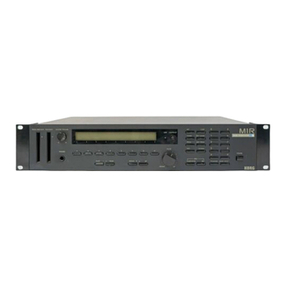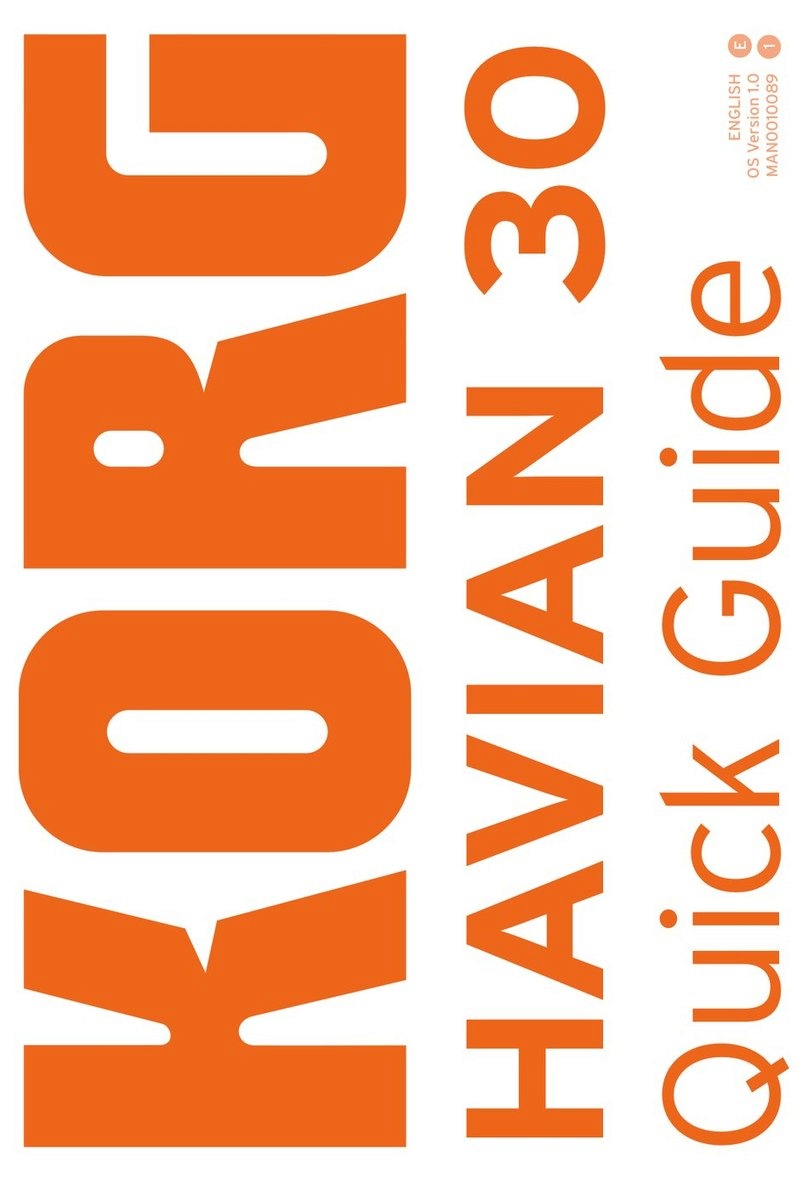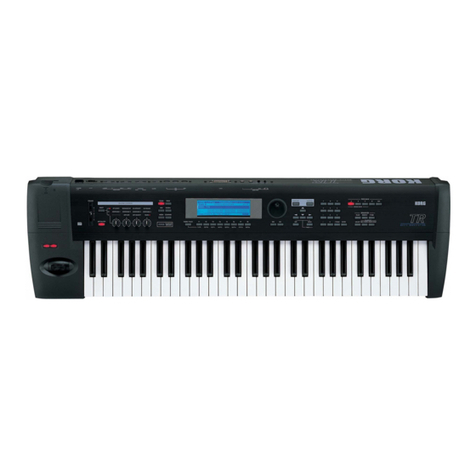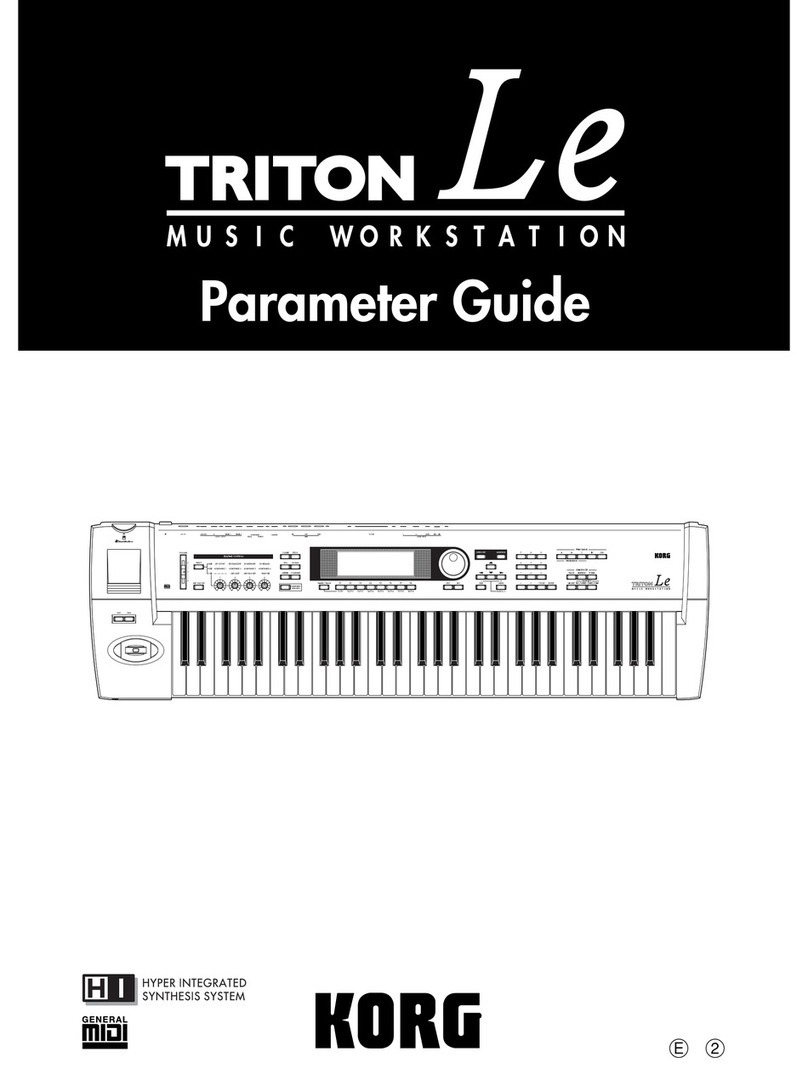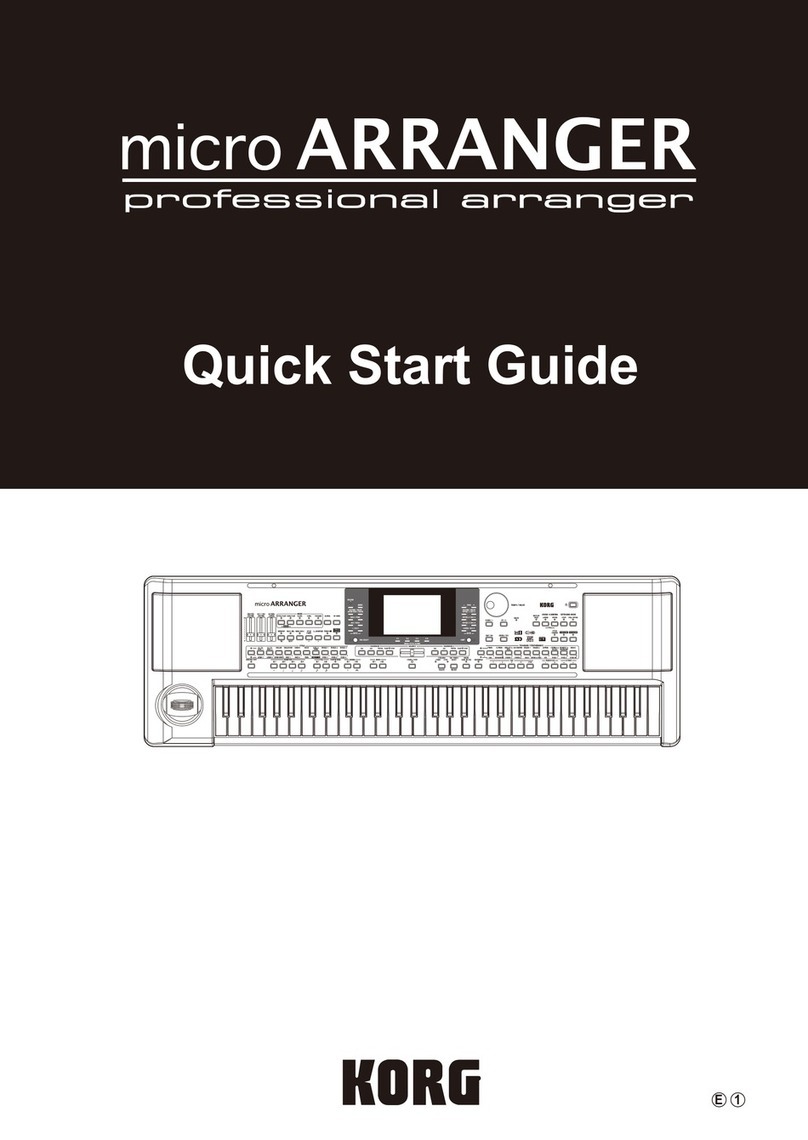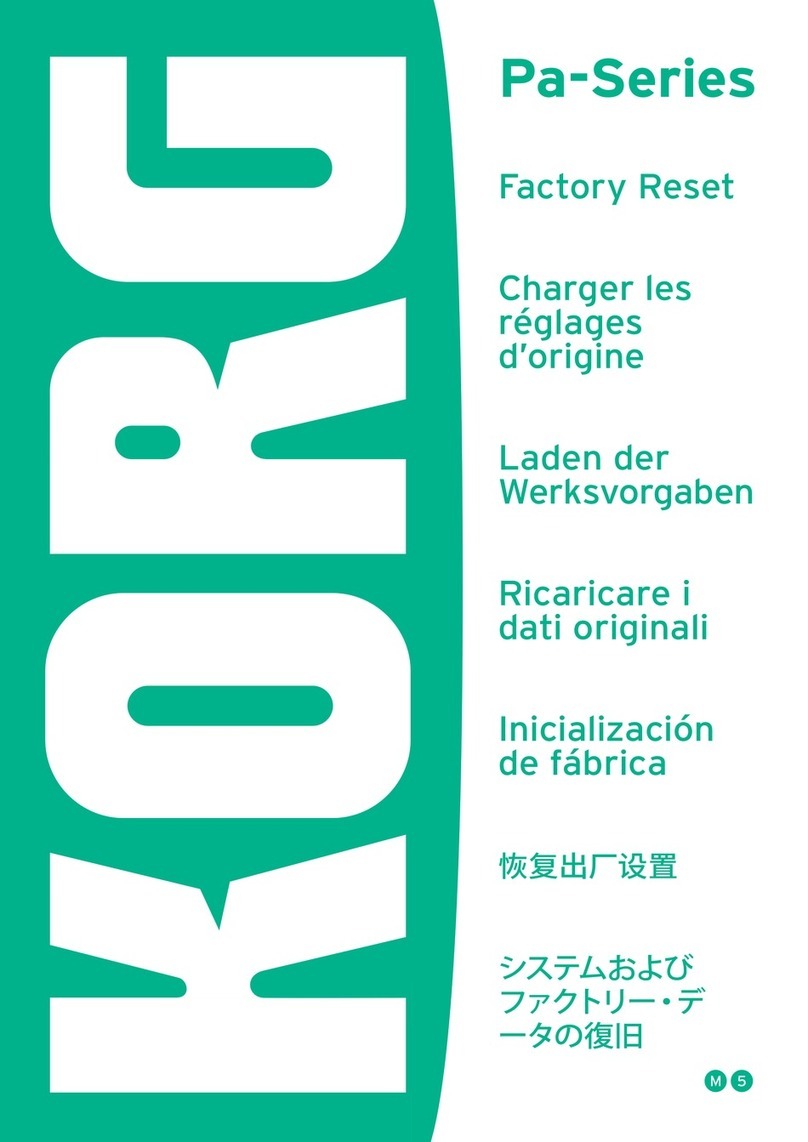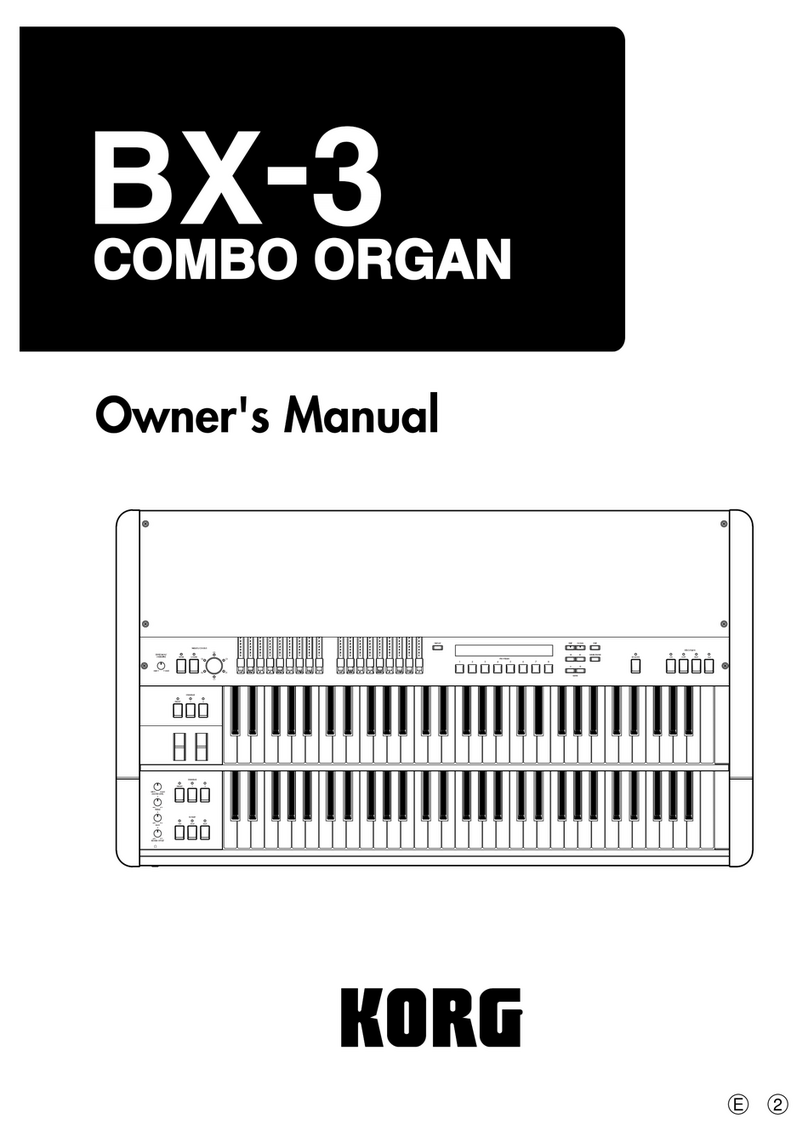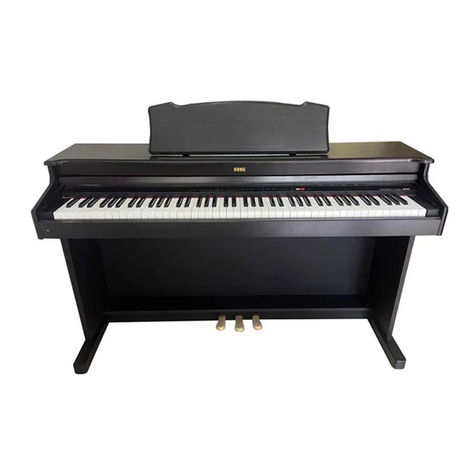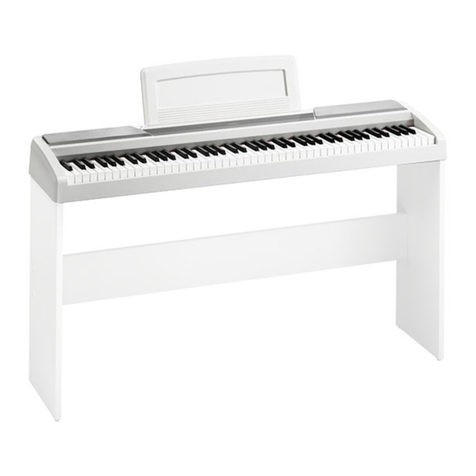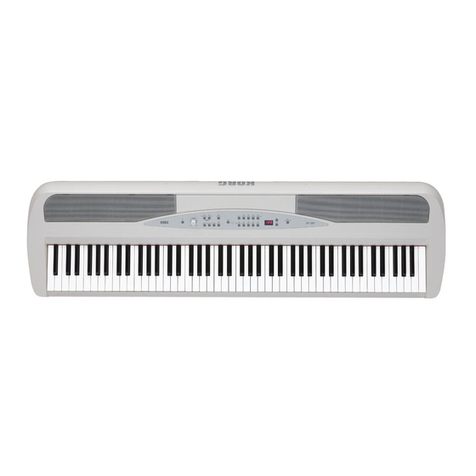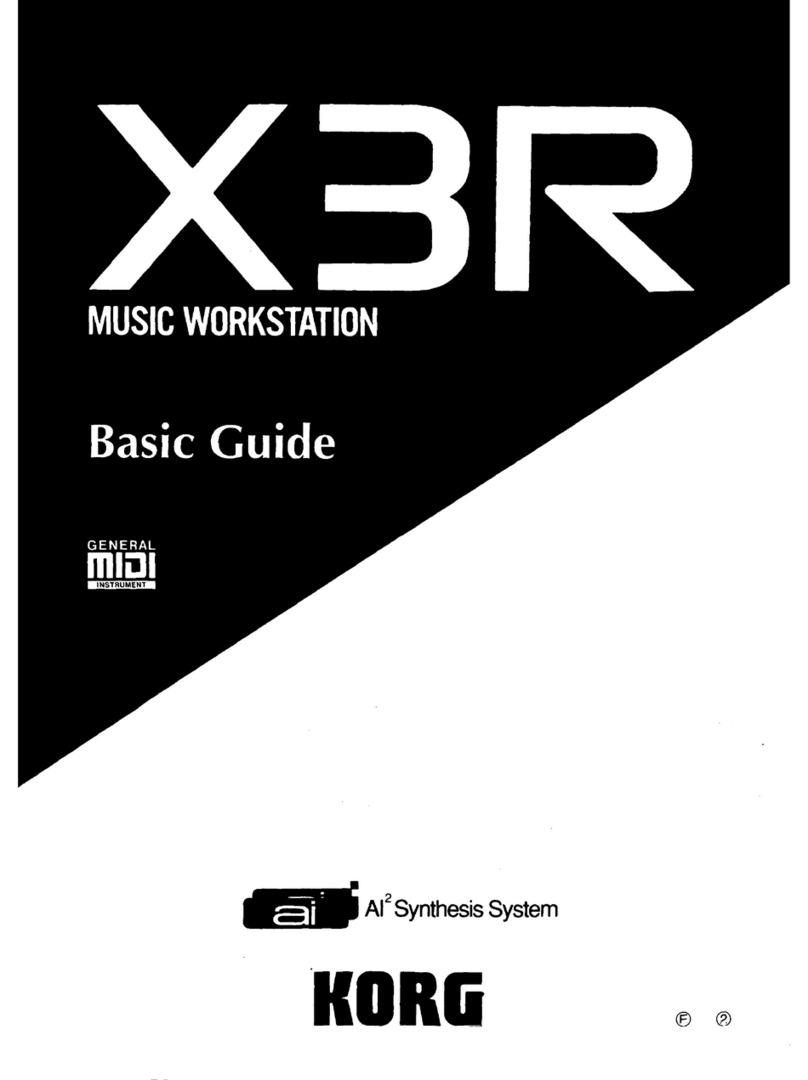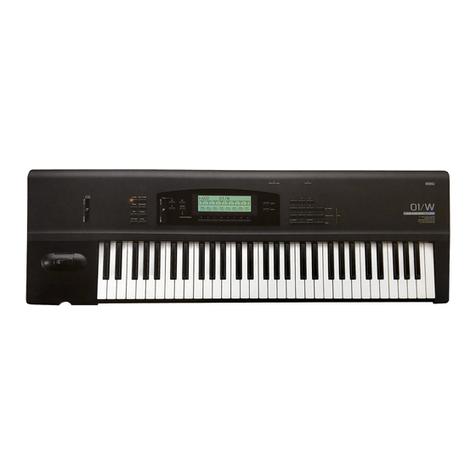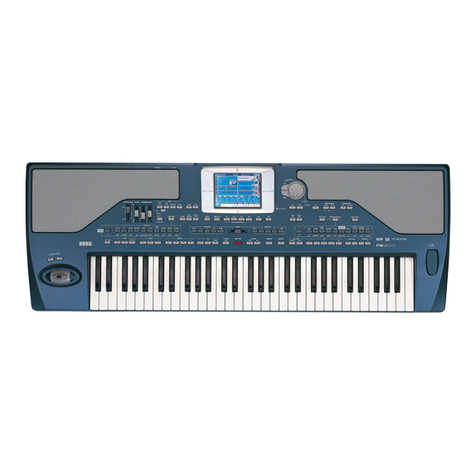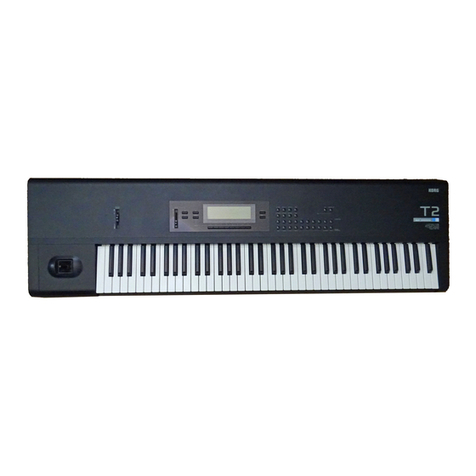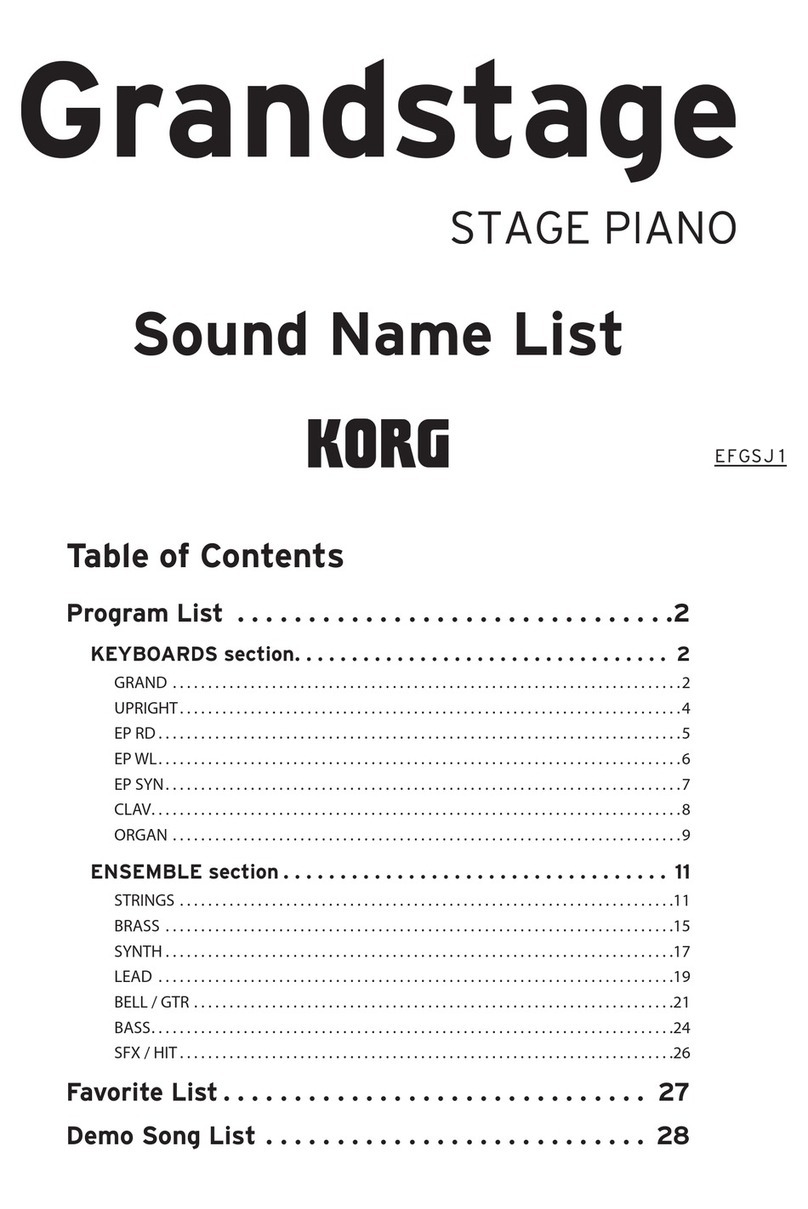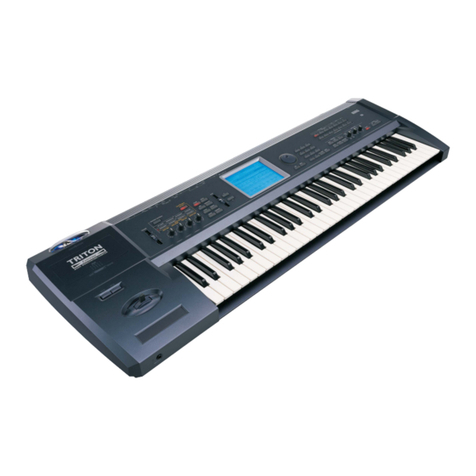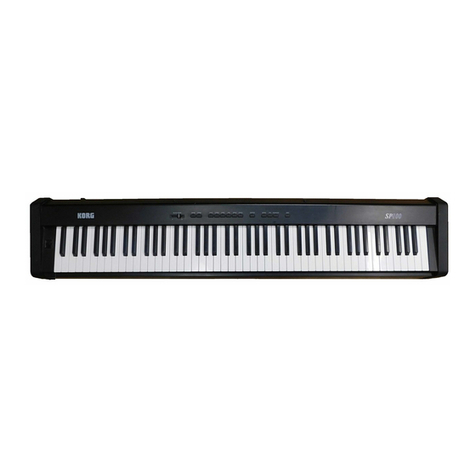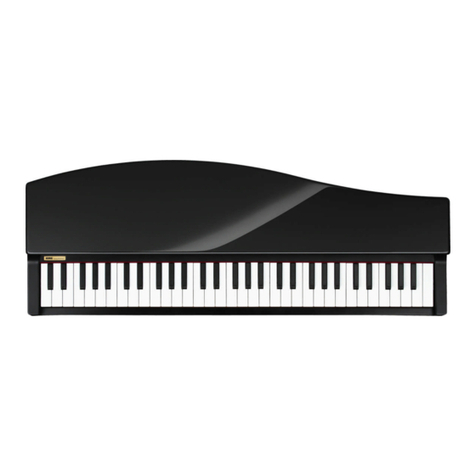
4
PRECAUTIONS
Location
Using the unit in the following locations can
result in a malfunction.
• In direct sunlight
• Locations of extreme temperature or humidity
• Excessively dusty or dirty locations
• Locations of excessive vibration
Power supply
The supplied universal AC adapter can be con-
nected to an AC outlet of voltages ranging from
100 to 240V. Do not connect it to an AC outlet of
voltage other than those for which your unit is
intended.
Interference with other electrical devices
This product contains a microcomputer. Radios
and televisions placed nearby may experience
reception interference. Operate this unit at a suit-
able distance from radios and televisions.
Handling
To avoid breakage, do not apply excessive force
to the switches or controls.
Care
If the exterior becomes dirty, wipe it with a clean,
dry cloth. Do not use liquid cleaners such as ben-
zene or thinner, or cleaning compounds or flam-
mable polishes.
Warning:
Do not use alchool to
clean the music stand. For heavy dirt, use a non-
abrasive household cleaner for glass and hard sur-
faces.
Keep this manual
After reading this manual, please keep it for later
reference.
Keeping foreign matter out of your equipment
• Never set any container with liquid in it near
this equipment. if liquid gets into the equip-
ment, it could cause a breakdown, fire, or elec-
trical shock.
• Be careful not to let metal objects get into the
equipment. If something does slip into the
equipment, unplug the AC adapter from the
wall outlet. Then contact your nearest Korg
dealer or the store where the equipment was
purchased.
CE MARK FOR EUROPEAN HARMO-
NIZED STANDARDS
The CE mark that is attached to our company’s
products of AC mains operated apparatus until
December 31, 1996 means it conforms to the
EMC Directive (89/336/EEC) and to the CE mark
Directive (93/68/EEC).
The CE mark that is attached after January 1,
1997 means it conforms to the EMC Directive
(89/336/EEC), to the CE mark Directive (93/68/
EEC) and to the Low Voltage Directive (73/23/
EEC).
In addition, the CE mark that is attached to our
company’s products of Battery operated apparatus
means it conforms to the EMC Directive (89/336/
EEC) and to the CE mark Directive (93/68/EEC).
THE FCC REGULATION WARNING
(FOR THE U.S.A. ONLY)
This equipment has been tested and found to
comply with the limits for a Class B digital
device, pursuant to Part 15 of the FCC Rules.
These limits are designed to provide reasonable
protection against harmful interference in a resi-
dential installation. This equipment generates,
uses, and can radiate radio frequency energy and,
if not installed and used in accordance with the
instructions, may cause harmful interference to
radio communications. However, there is no guar-
antee that interference will not occur in a particu-
lar installation. If this equipment does cause
harmful interference to radio or television recep-
tion, which can be determined by turning the
equipment off and on, the user is encouraged to
try to correct the interference by one or more of
the following measures:
• Reorient or relocate the receiving antenna.
• Increase the separation between the equip-
ment and receiver.
• Connect the equipment into an outlet on a cir-
cuit different from that to which the receiver is
connected.
